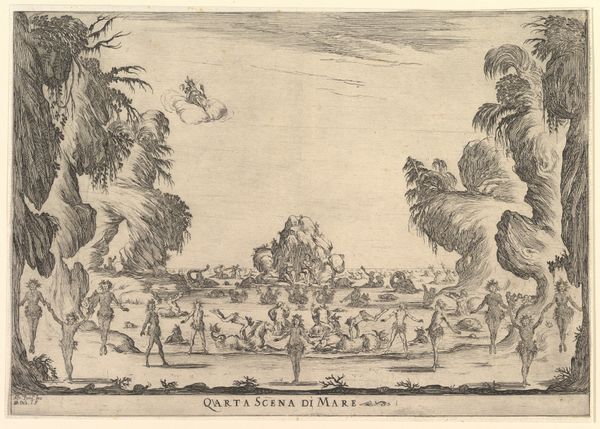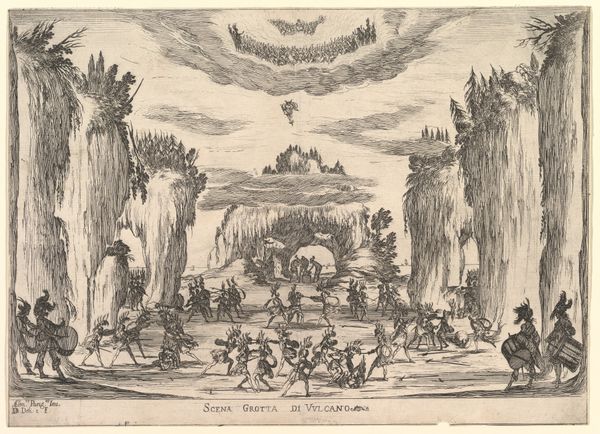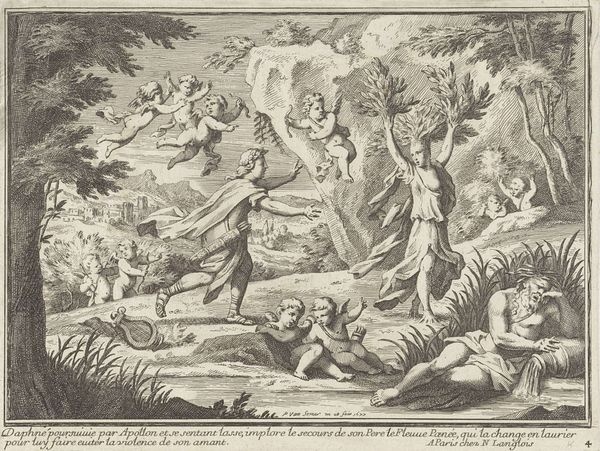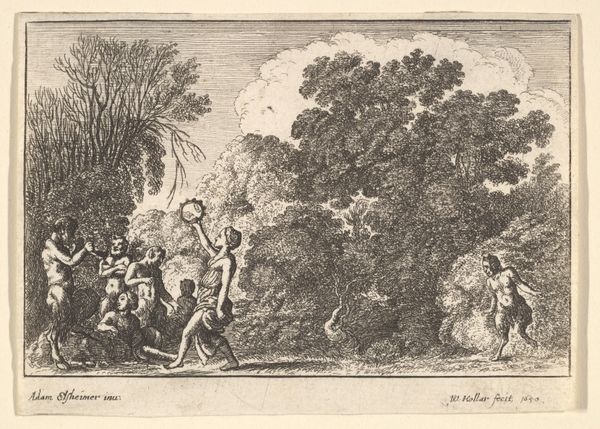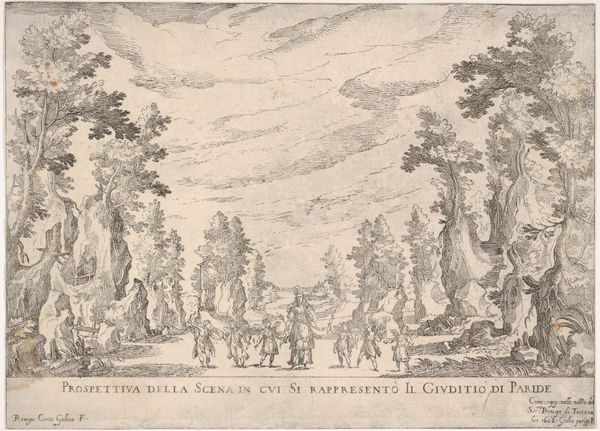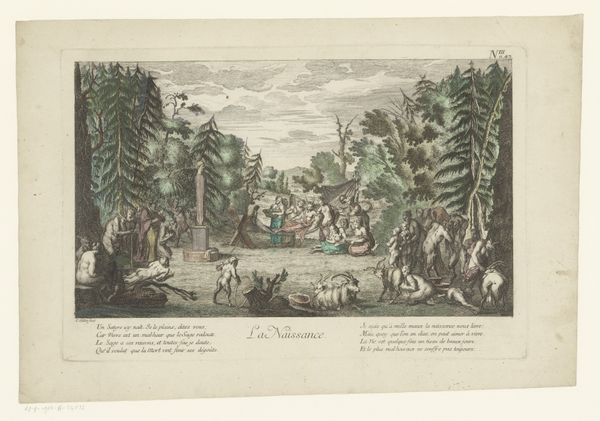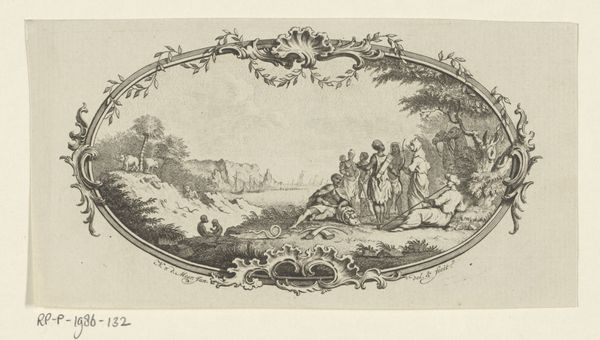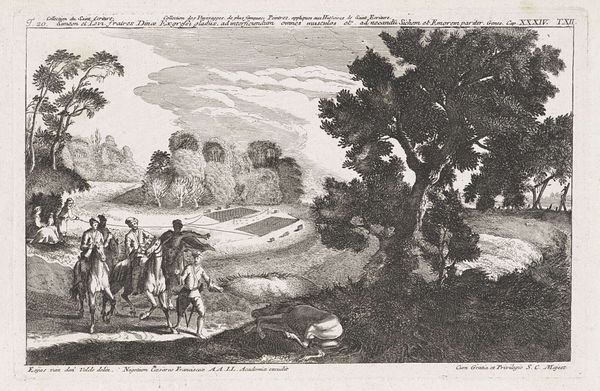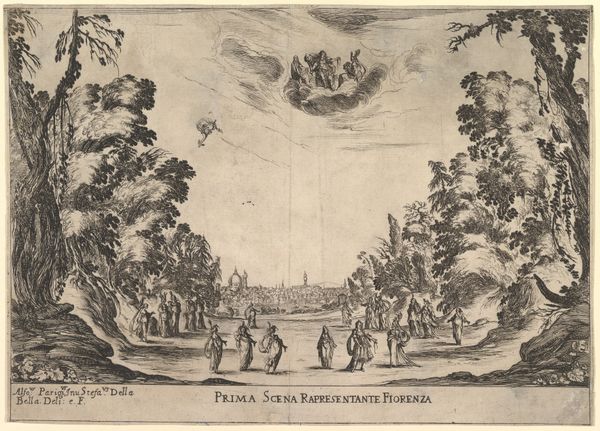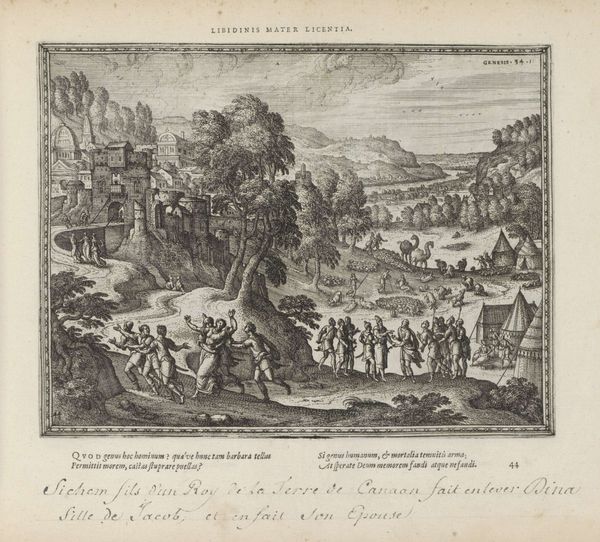
The Wedding of the Gods: Second Scene, Diana 1637
0:00
0:00
drawing, print, etching, engraving
#
drawing
#
ink drawing
#
baroque
#
pen drawing
# print
#
etching
#
landscape
#
engraving
Copyright: Public Domain
This print, “The Wedding of the Gods: Second Scene, Diana,” was made by Stefano della Bella in the mid-17th century, using the process of etching. Take a close look: it's made by coating a metal plate with wax, then drawing through the wax to expose the metal. When the plate is submerged in acid, the drawn lines are etched into it, creating grooves that hold ink. The more time spent in the acid bath, the deeper and darker the lines become. This print is an early example of mass production techniques, albeit by hand. It was a way of disseminating images widely, much like photographs today. The technique involves labor-intensive steps, from preparing the plate to printing the final image. However, etching enabled artists to produce multiple copies of their work and reach a broader audience beyond the elite circles of patrons and collectors. The use of line to create tone and texture speaks to the artist's skill, and the cultural desire for accessible images. So, when you look at this print, consider not just the mythological scene but also the labor and technology that brought it into being, and its circulation through society.
Comments
No comments
Be the first to comment and join the conversation on the ultimate creative platform.
